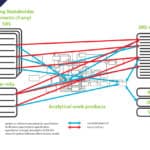There is no single answer to the question. The answer lies requirement-by-requirement and depends on the information content of the requirement, the importance of the requirement (based on the amount of loss if the requirement were not met), and the probability of the requirement not being met. The last two factors combine to constitute risk.
The aim is to maximize the difference between the risk-reduction benefit of verification of satisfaction of the requirement and the cost of achieving that benefit, giving an optimum verification requirement that drives verification design (how we will verify). The optimum verification requirement is usually best decided upon by discussion by a group of three engineers experienced in both verification and development, although a rigorous method also exists.
Non-functional requirements are those in sections 4.1, 4.2, and 4.5 to 4.10 of a well-structured system requirements specification. They are all requirements engineering types except functional, function and performance, and state/mode transition and response requirements.

Leveraging Decision Patterns – INCOSE/GfSE Webinar (VIDEO)
Decision-making is one of four fundamental human thinking (aka analysis) processes. Decisions comprise the essential thinking content, the integrative mechanism of any design process, and as such effect […]













